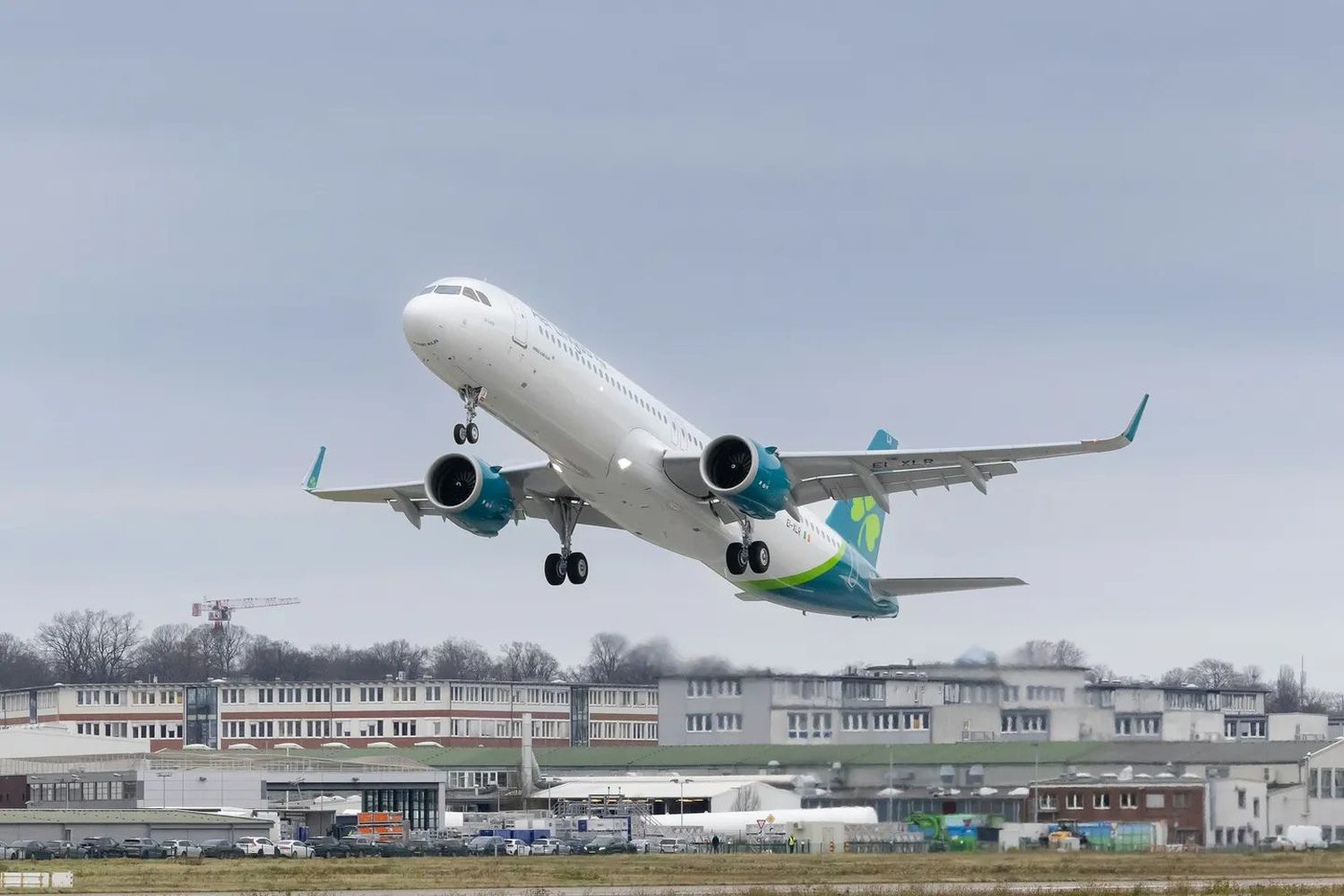Aer Lingus added the first Airbus A321XLR to its fleet, out of a total of six units ordered. With this delivery, carried out in Hamburg on December 18, the airline becomes the second global operator of this model and the second within the International Airlines Group (IAG).
The aircraft, powered by CFM LEAP-1A engines, features a two-class configuration with 184 seats: 16 in business class with fully lie-flat seats and 168 in economy class. According to the airline, it is the first aircraft in its fleet to include Airbus’s Airspace cabin, which offers larger overhead compartments (60% more storage space), connectivity at every seat, and a lighting system designed to enhance the passenger experience.
The A321XLR will enable Aer Lingus to expand its network of destinations beyond the East Coast of the United States and Canada, adding routes to cities such as Nashville and Indianapolis.
According to Airbus, the A321XLR offers a range of up to 4,700 nautical miles, representing 15% more range than its predecessor, the A321LR, along with 30% less fuel consumption per seat compared to older-generation aircraft. The aircraft is also designed to reduce nitrogen oxide (NOx) emissions and noise levels.
The European manufacturer highlighted that the A321XLR can operate with up to 50% sustainable aviation fuel (SAF) and aims to achieve the capacity to use 100% SAF across its entire fleet by 2030.
With this acquisition, Aer Lingus aims to strengthen its presence in the transatlantic market, in line with the airline’s and IAG Group’s expansion plans. Iberia was the first airline in the world to put the A321XLR into regular operation last month.
The Airbus A321XLR received its certification in July 2024, following its maiden flight in 2022. Since the beginning of the year, it has undergone intensive testing under the supervision of the European Union Aviation Safety Agency (EASA), evaluating the functionality and reliability of its systems.
However, since mid-2024, the manufacturer has been dealing with a deficit in the aircraft’s anticipated range. This adjustment stems from agreements reached with European regulators regarding necessary design safeguards, a critical step toward certifying the new long-range single-aisle aircraft, primarily concerning the additional tank. This situation delayed the delivery of the first model, initially scheduled for the first half of 2024.
See also: The first transatlantic flight of the Airbus A321XLR took off


Comentarios
Para comentar, debés estar registrado
Por favor, iniciá sesión